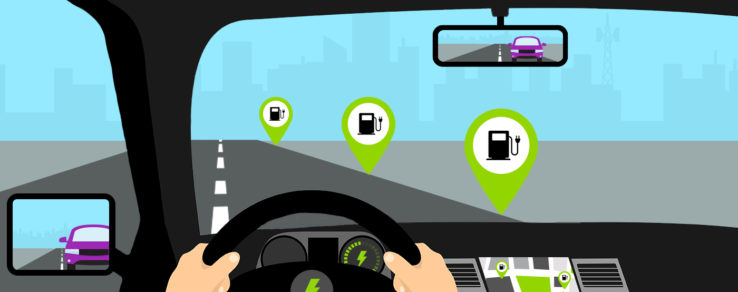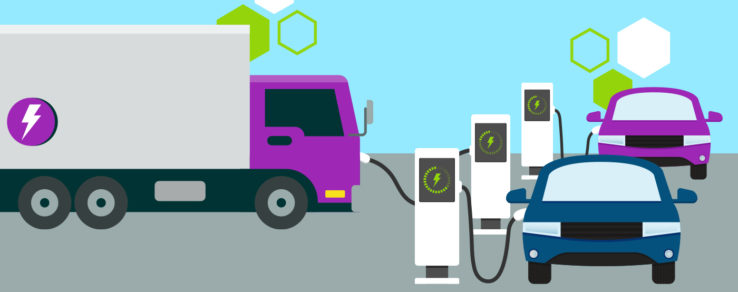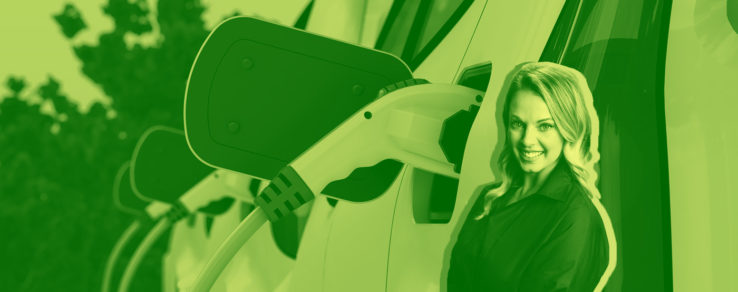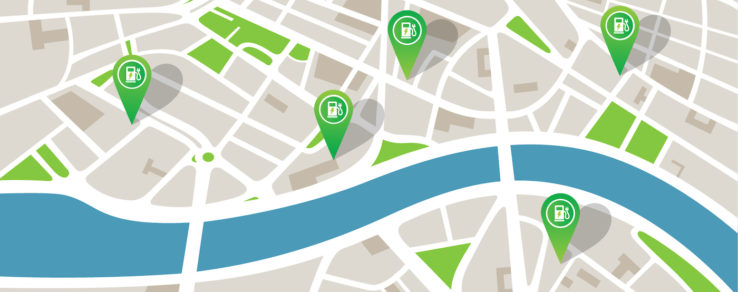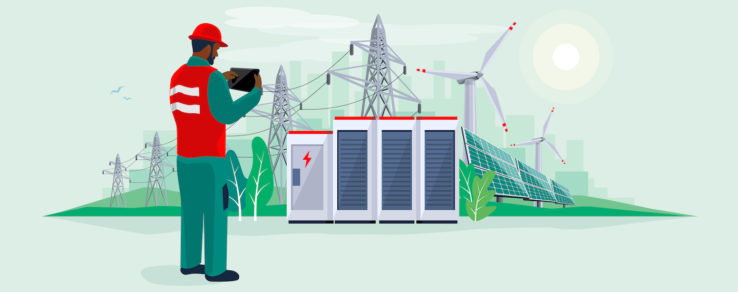Your energy utility plays an important role in encouraging customers to go electric. However, there are several key challenges for electric vehicle (EV) adoption that prevent customers from making the switch from gasoline-powered vehicles. In fact, up to 315,000 more EVs could have been on the road last year if adoption barriers were removed.Learn more about the top four customer roadblocks and the best ways to dispel these concerns in your program promotions.
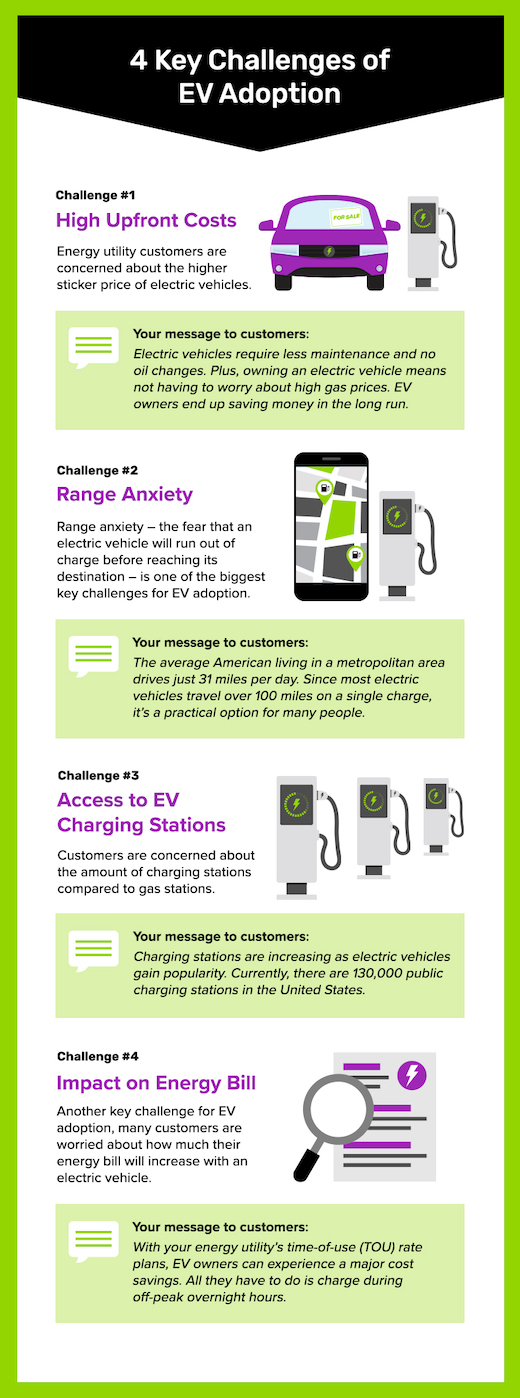
High upfront cost
What energy customers think: Today’s consumers know that electric vehicles are a viable solution to reduce their carbon footprint and improve the environment. However, one of the key challenges for EV adoption is the high upfront cost. Your customers may not be aware of the various incentives available to help lower the purchase cost.
An average electric vehicle costs $61,488, with some electric vehicles costing over $100,000 for luxury models. While this is still more expensive than many gasoline-powered vehicles, that gap is decreasing every year, especially with incentives and maintenance savings for EVs. Additionally, the cost of a Level 2 home charger starts around $500 to $800, with $1000 to $1500 for the installation of a new service panel and 240-volt outlet if needed.
What your message should be: While electric vehicles have higher upfront costs, they are less expensive to own and operate. Therefore, customers are able to save money over the long run. Since there are fewer moving parts to break down, electric vehicles are also cheaper to maintain. Plus, customers never have to worry about getting an oil change.
To counteract this key challenge for EV adoption, be sure to provide your customers with helpful resources on federal and state incentives. Another significant benefit of purchasing an electric vehicle is not worrying about high gas prices. Remind customers that they can avoid the gas station altogether as EV owners. Make this cost-of-ownership comparison clear with infographics and calculators on your website that help customers educate themselves on vehicle options.
Range anxiety
What energy customers think: One of the top key challenges for EV adoption is range anxiety, or a fear that their electric vehicle will run out of charge before reaching its destination. In fact, range anxiety is often cited as the main reason why consumers are hesitant about purchasing an electric vehicle.
Range anxiety is a feeling of dread when drivers can’t find an open charging station and worry about being stranded on the side of the road. It’s important to note that drivers of gasoline-powered vehicles can also experience range anxiety. This can happen when a driver’s fuel level drops too low and they can’t find a gas station.
What your message should be: To reduce range anxiety, educate your customers about how electric vehicles can fit into their everyday lives. According to the American Automobile Association (AAA), the average American in an urban area drives just 31 miles per day. Most EVs can travel more than 100 miles on a single charge, and some models can travel between 200 and 400 miles. For drivers who don’t regularly drive long distances, an electric vehicle can be a practical option.
Access to charging stations
What energy customers think: Another key challenge for EV adoption, your customers think there’s a limited number of EV charging stations compared to the number of gas stations. As a result, they have concerns about access to charging infrastructure. For example, when taking a road trip, customers want to be confident that plentiful charging stations are available along the route.
What your message should be: Inform your customers that charging stations are popping up everywhere as electric vehicles grow in popularity. EV charging stations can be found in various locations like shopping centers, local businesses, apartment complexes and more. There are also charging stations in every state, including Alaska. To help your customers find charging station locations, share this helpful resource from the U.S. Department of Energy.
Currently, there are 103,000 charging stations (free and private) in the United States. However, there are only 9,300 free charging stations that don’t require a parking fee to access. In comparison, there are more than 145,000 public gas stations, illustrating that EV charging stations still lag behind.
Your energy utility should educate customers on the importance of home EV chargers and offer rebates to help offset the costs. In fact, the Office of Energy Efficiency and Renewable Energy finds that over 80% of EV charging occurs at home during the overnight hours. If customers make a habit of plugging in their electric vehicle every night, they will be less likely to experience range anxiety or even need access to a charging station. It’s also important to highlight that customers can charge their vehicles for free at public charging stations, eliminating the cost to charge altogether. By providing educational resources with charging station locations as well as cost-saving rebates, energy utilities can mitigate this key challenge for EV adoption.
Impact on electric bill
What energy customers think: Many consumers like the idea of owning an electric vehicle but have concerns about higher electric bills or overall power reliability. In addition to the impact on their monthly bill, your customers also have questions about at-home charging options:
- What charging options are available?
- How much do they cost?
- How long does it take to charge an EV?
- What type of equipment is required for installation?
What your message should be: Reach out to EV customers to share time-of-use (TOU) rate options to help them reduce their monthly bills. By charging during off-peak hours, they can save energy costs and help lower demand on the grid. Also be sure to share opportunities for customers to save money when they purchase an electric vehicle, whether through your utility or a government program.
If your energy utility has a smart charger rebate program, educate customers about the pros and cons of each charger. For example, Level 2 smart chargers offer faster charging times but do not plug into a standard 120-volt household outlet. Customers are looking to their energy provider to help them decide what charger is the right fit for their lifestyle and budget. Infographics, videos and articles on your website can help educate customers on the best option for them. By countering these key challenges for EV adoption, your energy utility can help drive interest in electric vehicles and increase customer engagement in your EV program promotions.
